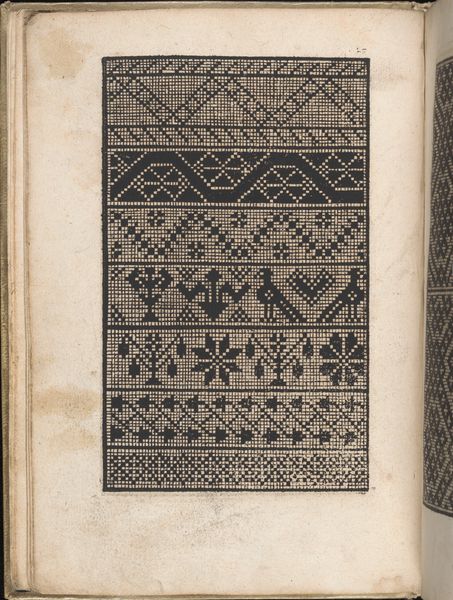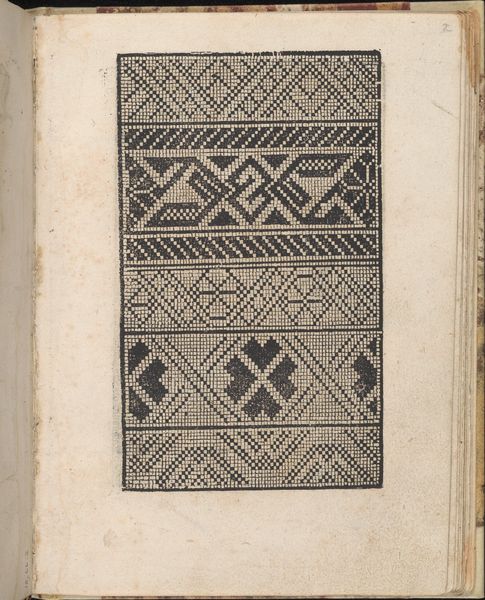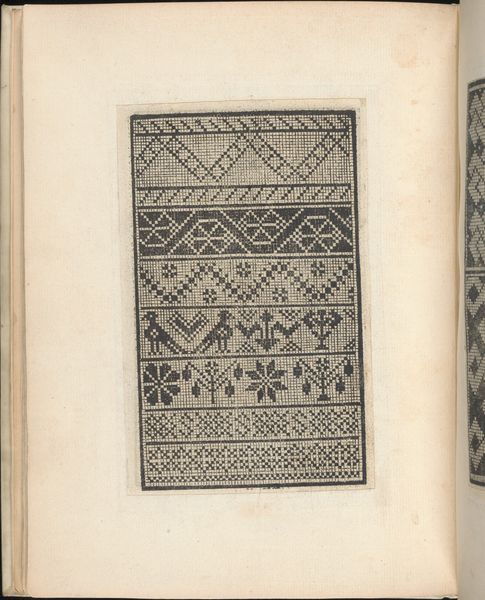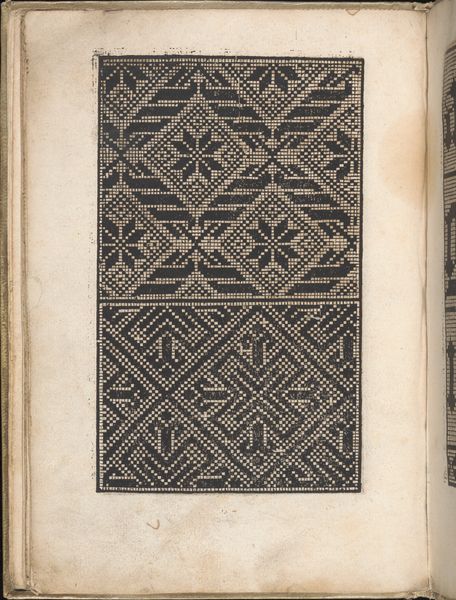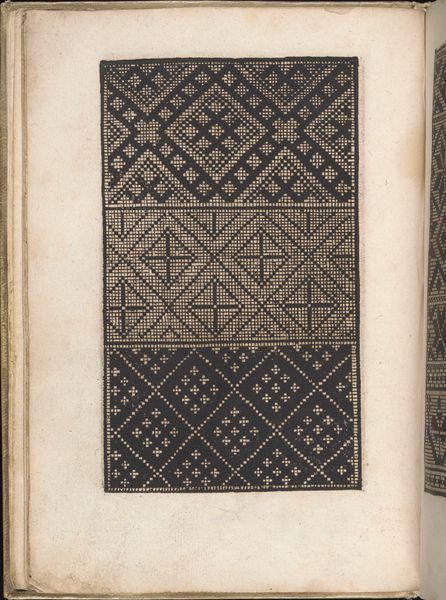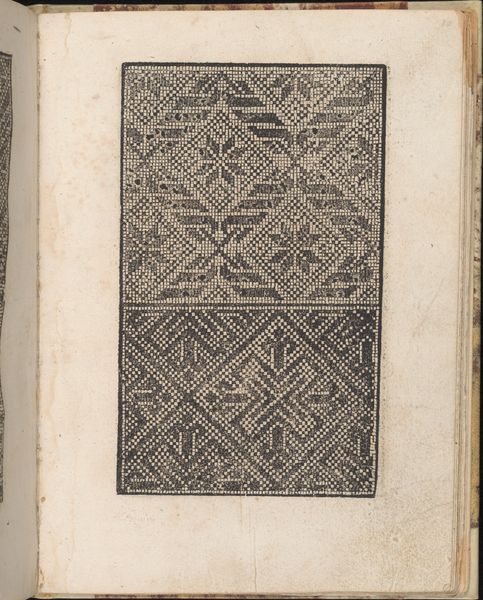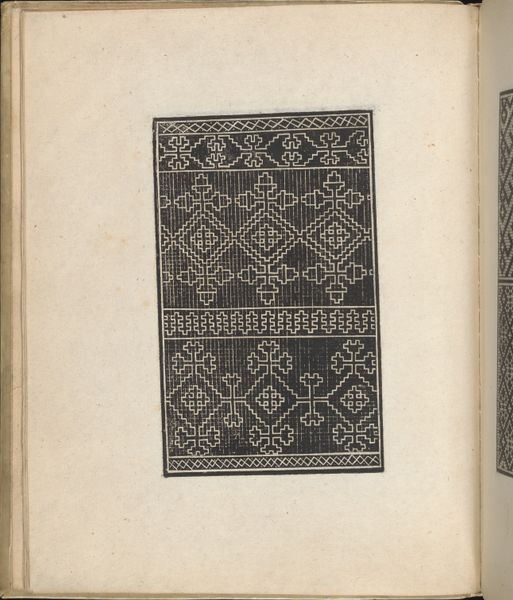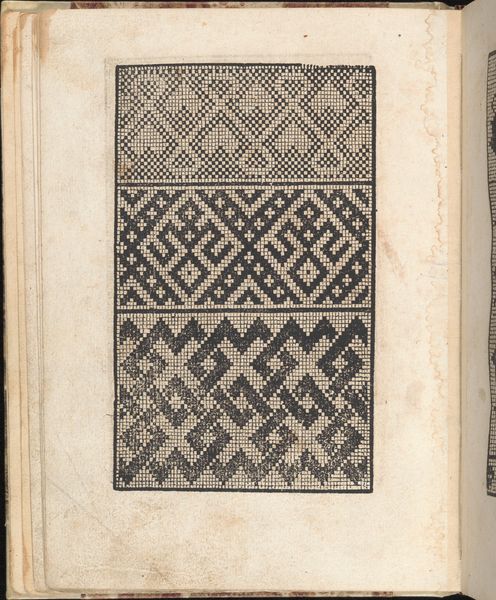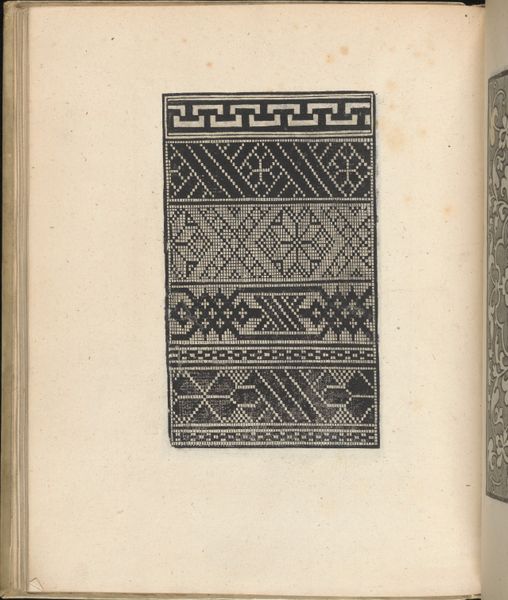
drawing, print, paper, ink, woodcut
#
drawing
# print
#
book
#
pattern
#
paper
#
ink
#
geometric
#
woodcut
#
northern-renaissance
Dimensions: Overall: 7 7/8 x 5 1/2 in. (20 x 14 cm)
Copyright: Public Domain
Curator: It's striking how this page practically vibrates with pattern. Editor: Indeed. We’re looking at page 21r from *Eyn new kunstlich boich*, which translates to “A New Book of Art,” created in 1529 by Peter Quentel. This is a woodcut print, using ink on paper, and it resides here at The Met. What initially catches your attention about it? Curator: Well, the intensity of the black and white contrast is immediate. But also, look at the density! It seems incredibly labour-intensive to produce such intricate patterns using the woodcut technique. What role might books like this have played back then? Editor: Pattern books such as this served as vital resources for artisans. We must recall the guilds regulating artistic production, standardizing methods. Imagine this influencing weaving, embroidery and other crafts. The printing press democratized design. Before this, pattern sharing depended on travelling artisans, word of mouth or singular, precious drawings. Curator: Exactly. It is such a fascinating instance of the industrialization of craft! I think also of the skills needed here – the labour that goes into first the drawing and then carving these dense, repeating motifs in wood. I can imagine the impact of printed pattern books being somewhat unevenly received by craftspeople, then. Editor: Undoubtedly. They reshaped design accessibility. A broader consumer base could seek decorative arts. Furthermore, printed patterns probably changed the apprenticeship system. Imagine apprentices now studying woodcut pages instead of years with a master alone. Curator: The availability of this design library must have been empowering for some while upsetting established artistic hierarchies for others. Looking closer, the geometry of these designs are mesmerizing and deceptively complex. It presents an accessible artistic technique to so many. I now find myself eager to look at the book in its entirety to get a better view. Editor: Yes, its physical form as a book underscores its purpose. Beyond just a display, the book provided education, instruction and a collection of motifs from which craftspeople could pick and choose based on commission requirements, market interests and availability of materials. Thank you for discussing this fascinating artifact with me. Curator: My pleasure! I've come away thinking more about the intersection of design, labour and the book as a transformative technology.
Comments
No comments
Be the first to comment and join the conversation on the ultimate creative platform.
